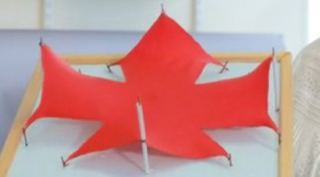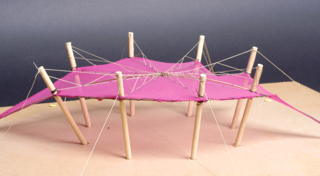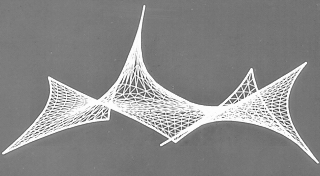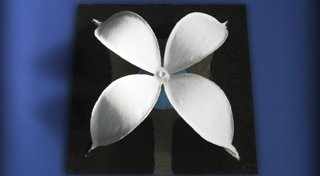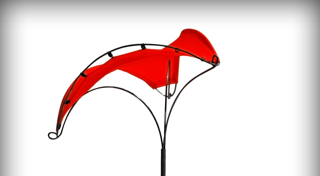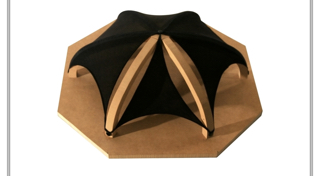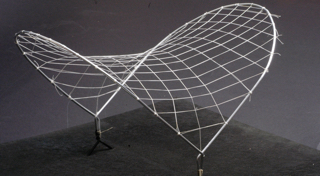Professor Wanda Lewis

Professor Wanda Lewis
Emeritus Professor in Civil Engineering
W dot J dot Lewis at warwick dot ac dot uk
+44 (0) 24 7652 3138
Qualifications
Dip.Econ (Opole, Poland), Dipl.Inz (Opole, Poland), MSc (Birmingham), PhD (CNAA London), CEng, FICE, FRSA
Honours and Distinctions
2020 - 2023 – Emeritus Fellowship, Leverhulme Trust (Grant ref. no. EM-2020-059/9)
2020 – Fellowship of the Royal Society of Arts
2018 – Outstanding Contribution to Reviewing, Elsevier
Background

After a short spell in industry, I joined the University of Warwick in 1986, where I am based to this day. I am a Professor in the School of Engineering, University of Warwick, a chartered civil engineer, a Fellow of the Institution of Civil Engineers, and the Royal Society of Arts. My 30+ years of research experience is reflected in the monograph 'Tension Structures: Form and Behaviour' (review)Link opens in a new window, numerous research and technical press articles, and international lectures. Having studied tension structures extensively, I learnt about the importance of structural form in response to load and a process of FORM-FINDING that implements natural principles in structural design. It is a process of shaping structures by applying, or controlling stresses developing in them under statistically prevalent load. Such structures comply with ‘form follows force’ principle observed in the formation of natural objects, such as trees, bones, shells. My work on structural forms shaped by biomimicry in form-finding is reflected in documentaries, podcasts, press releases and international lectures.
My work on computational form-finding of flexible fabric structures progressed to analytical form-finding that predicts optimal shapes of rigid structures, such as arch bridges, for example. This work challenges conventional design approaches that use imposed structural forms and rely on the limit state design philosophy alone.
I have led a number of national and European research projects in collaboration with industry (Arup, Jaguar, Roll-Royce, SL-Rach, Canobbio) as well as multi-disciplinary projects, such as 'Designing for the 21st Century' - in collaboration with the Courtauld Institute of Art, London.
Research Activities
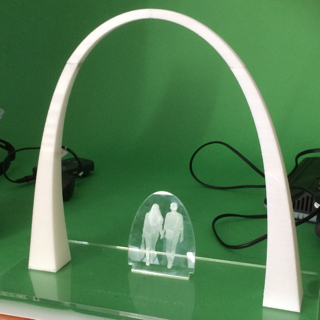
My research is concerned with FORM-FINDING related to: Conceptual Design of Fabric StructuresLink opens in a new window, Minimal Structures and NatureLink opens in a new window, Structural Form in Engineering, Nature and Art.Link opens in a new window
The essence here is to achieve optimum structural forms by using nature’s own design principle that ensures minimal stress response to loading.
My work on natural structural forms progressed beyond flexible tension structuresLink opens in a new window and includes rigid-type objects, such as arch bridges (Proceedings of the Royal Society A: Mathematical, Physical and Engineering Sciences, 2016, 472 (2190)Link opens in a new window).
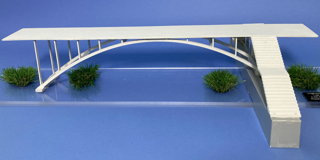
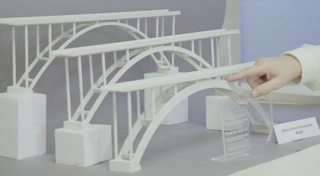
Its results challenge established optimisation criteria and conventional design approaches that use imposed structural geometries in conjunction with ultimate load as part of Limit State Design philosophy
Biomedical work on shaping minimal scaffolds for bone replacement awaits potential application.
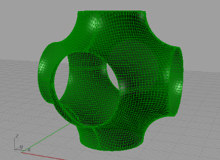
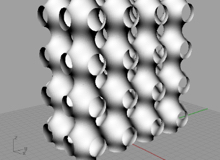
Past research relevant to the automotive and aerospace industries included the convertible roof for the Jaguar XK8Link opens in a new window, and, at a feasibility level, compressor blades (Engineering Structures 2011, 33, 9, 2612–2620).
Public Engagement
- Film: Nature Informed Design Public Lecture
- Interview: ‘Back to Nature’, Bridge Design and Engineering 2023, issue 111, p5
- Film: London Millennium bridgeLink opens in a new window
- Press: Boris Johnson’s English Channel bridge: an expert’s viewLink opens in a new window
- Press: Scotland-Northern Ireland bridge - how to make it a reality: an expert’s viewLink opens in a new window
- Film: ‘Biomimicry in Engineered Structures’Link opens in a new window (3 mins)
- Film: ‘Designing Better Bridges’Link opens in a new window (4 mins)
- Film: ‘The Garden of Secrets Documentary’ featuring nature and engineering designLink opens in a new window
- Bookshop: Can Tension Structures Teach us Conceptual Design Sense?Link opens in a new window
- Podcast: 'Movers & Shakers' IASS 2021 University of SurreyLink opens in a new window
- Biography, E-magazine: 'Movers & Shakers' IASS 2021Link opens in a new window
- UK Contact: Mariusz DudekLink opens in a new window
Journal Publications
- Lewis W. J. 2023. The shape of the Gateway Arch. Mathematics Today, 59, Oct., pp.166-167.
- Lewis W. J. 2023. The shape of the Gateway Arch. Mathematics Today, 59, Dec., p. 200.
- Lewis W. J., Russell J. M. and Li T. Q. 2023. Moment-less arches of constant axial stress: Implications for design. Engineering Structures, 116968
- Lewis W. J. (Wanda J.). 2022. Constant stress arches and their design space. Proc. R. Soc. A 478:20210428. doi:10.1098/rspa.2021.0428Link opens in a new window
- Lewis W. J., Russell J. M. and Li T. Q. 2021. Moment-less arches for reduced stress state. Comparisons with conventional arch forms. Computers & Structures, 251.106524. doi:10.1016/j.compstruc.2021.106524Link opens in a new window
- Li, T.Q., Ward, T., Lewis, W. J. (Wanda J.). 2018. In-plane torsional stiffness in a macro-panel element for practical finite element modelling. Advances in Engineering Software, 122, pp. 93-105, View
- Lewis, W. J. (Wanda J.). 2016. Mathematical model of a moment-less arch. Proceedings of the Royal Society A: Mathematical, Physical and Engineering Sciences, 472 (2190), View
- Gale, Stuart M., Lewis, W. J. (Wanda J.). 2016. Patterning of tensile fabric structures with a discrete element model using dynamic relaxation. Computers & Structures, 169, pp. 112-121, View
- Lewis, W. J. (Wanda J.). 2015. Form-finding : an alternative to structural optimisation. Computational Technology Reviews, 11, pp. 121-149, View
- Lewis, W. J. (Wanda J.), Chen, S., Corcoran, A. J., Connel, J., Flew, R. D., Hill, R., Kashef Alghata, M., Rameez, R., Abi Sofian, A. S.. 2015. Design of a tension fabric structure with analogy to nature. Polska Energetyka Sloneczna (I-IV), pp. 5-10, View
- Lewis, W. J. (Wanda J.), Smith, James R.. 2014. The effect of string tension variation on the perceived pitch of a classical guitar. Exchanges: the Warwick Research Journal, Volume 2 (Number 1), pp. 53-81, View
- Brew, John S., Lewis, W. J. (Wanda J.). 2013. Spline-based and stress-monitored patterning of fabric structures. Computers & Structures, Vol.119, pp. 203-214, View
- Gosling, Paul, Bridgens, B. N., Albrecht, A., Alpermann, H., Angeleri, A., Barnes, M., Bartle, N., Canobbio, R., Dieringer, F., Gellin, S., Lewis, W. J. (Wanda J.), Mageau, N., Mahadevan, R., Marion, J. -M., Marsden, P., Milligan, E., Phang, Y. P., Sahlin, K., Stimpfle, B., Suire, O., Uhlemann, J.. 2013. Analysis and design of membrane structures : results of a round robin exercise. Engineering Structures, Volume 48, pp. 313-328, View
- Lewis, W. J. (Wanda J.). 2012. A mathematical model for assessment of material requirements for cable supported bridges: implications for conceptual design. Engineering Structures, Vol.42, pp. 266-277, View
- Lewis, W. J. (Wanda J.). 2012. Modelling of fabric structures and associated design issues. Journal of Architectural Engineering, Volume 19 (Number 2), pp. 81-88, View
- Lewis, W. J. (Wanda J.). 2012. The question of structural form : educational aspects. Proceedings of the ICE - Forensic Engineering, Volume 165 (Number 3), pp. 131-141, View
- Lewis, W. J. (Wanda J.), Warburton, H. B. 2012. Discussion : the question of structural form : educational aspects. Proceedings of the ICE - Forensic Engineering, 165 (4), pp. 199-200, View
- Lewis, W. J., Brew, J. S., Bryanston-Cross, P., Nawasra, J. S.. 2011. Form-finding as a modelling tool for shaping mechanical components: a feasibility case study of an axial-flow compressor blade. Engineering Structures, Vol.33 (No.9), pp. 2612-2620, View
- Lewis, W. J. (Wanda J.). 2008. Computational form-finding methods for fabric structures. Proceedings of the ICE - Engineering and Computational Mechanics, Vol.161 (No.3), pp. 139-149, View
- Brew, J. S., Lewis, W. J. (Wanda J.). 2007. Tension membranes modelled by curvi-linear bicubic splines. International Journal for Numerical Methods in Engineering, Vol.72 (No.1), pp. 1-21, View
- Brew, J. S., Lewis, W. J. (Wanda J.). 2007. Free hanging membrane model for shell structures. International Journal for Numerical Methods in Engineering, Vol.71 (No.13), pp. 1513-1533, View
Books and Chapters
- Lewis, W. J. (Wanda J). 2018. Tension structures. Form and behaviour. ICE Publishing, London.
- Lewis, W. J. (Wanda J.), Brew, J. S.. 2009. Stress computation, visualisation, and measurement in: 1. design of minimum energy forms of fabric enclosures and 2. painting conservation and novel artist materials. In: Inns, Thomas; (ed.), Designing for the 21st Century Volume 2: interdisciplinary methods and findings, Farnham, U.K., Gower Publishing, pp. 322-341, View
- Lewis, W. J. (Wanda J.). 2009. Architectural fabrics. In: Forde, Michael C.; (ed.), ICE Manual of Construction Materials, London, U.K., Thomas Telford Ltd., pp. 873-886, View
- Lewis, W. J. (Wanda J.), Kowalinska, Danuta W.. 2008, Konstrukcje napiete : ich forma i praca, Opole, Poland, Wydawnictwo Instytut Slaski Sp. z. o.o., View
Conference Publications
- Lewis, Wanda. 2023. Constant stress and statistically prevalent load in shaping optimal forms of arch structures. Proceedings: Innovative Structural Systems in Architecture (ISSA2023), 9-10 November, Wroclaw, Poland, pp.1- 4.
- Lewis, Wanda. 2022 Principle of constant stress in analytical form-finding for durable design. Proceedings International Conference Structural Engineering, Mechanics and Computation (SEMC 2022), 5-7 September, Cape Town ISBN 978-1-003-34844-3, pp. 741-744.
- Lewis, Wanda. 2021. We can build whatever we like… can’t we? Proceedings Innovative Structural Systems in Architecture (ISSA2021), 5-6 November, Wroclaw, Poland, pp.1-8.
- Lewis, Wanda. 2021. Re-defining arch structures through form-finding. Proceedings IASS Annual Symposium 2020/21 and the 7th International Conference on Spatial Structures: Inspiring the Next Generation, 23 – 27 August 2021, Guilford, Surrey, UK, pp.1-11.
- Lewis, Wanda. 2016. Form-finding approach to modelling minimal structural forms, with analogy to nature. Innovative Structural Systems in Architecture 2016 (ISSA2016), Wroclaw, Poland, 3-5 Nov 2016, Published in Proceedings ISSA 2016 : Innovative Structural Systems in Architecture, pp. 39-42, View

